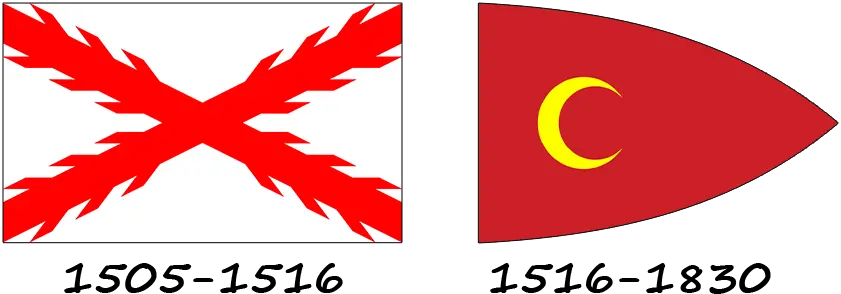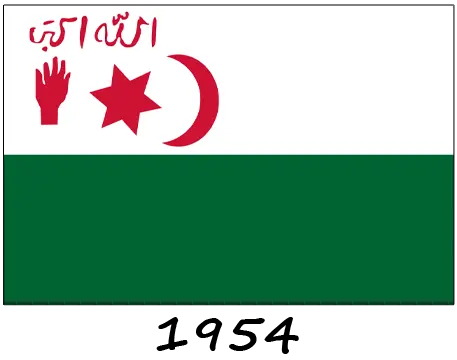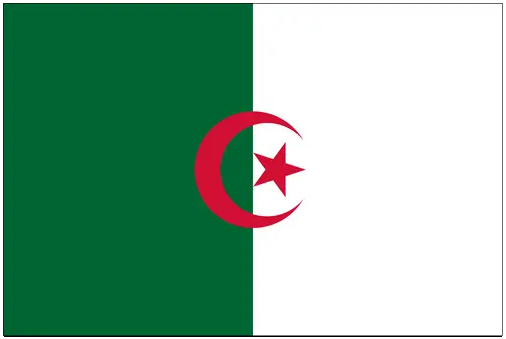The flag of Algeria was officially adopted on July 3, 1962, after independence, and consists of two vertical stripes of equal size: green and white with a red crescent and a star in the center of the flag.
The flag of Algeria was officially adopted on July 3, 1962, after independence, and consists of two vertical stripes of equal size: green and white with a red crescent and a star in the center of the flag.
The five pillars of Islam are the basic principles and obligations of every Muslim. They form the basis of the religion and show the way to a righteous life. These pillars and their meanings are listed below:
The first colonizers of Algeria were the Phoenicians, who founded trading colonies along the coast around the 12th century BC. One of the most famous Phoenician cities was Icosium, on the site of which modern Algiers is located. In the 16th century, in particular after the defeat of the Granada Emirate in 1492, Spain tried to expand its possessions in North Africa. In 1510, the Spaniards captured several strategically important ports along the Algerian coast, including Oran, Algiers, and Bejaia. During this time, the Spaniards established their fortresses (the so-called “presidios”) to control the coastal areas and protect them from pirates and Ottomans. However, in 1516, the Barbarossa brothers, led by Khair-ud-Din, captured the city of Algiers and expelled the Spaniards. This was the beginning of Ottoman rule in the region, which was officially established in 1518, when Algeria became part of the Ottoman Empire, and which lasted for more than three centuries. During this period, Ottoman symbols were used, including the red flag with a yellow crescent.

In 1830, France conquered Algeria and secured the status of colonial ruler of these territories for the next 132 years. During the occupation, Algeria was officially incorporated into France, and the French tricolor became the symbol of power on its territory. However, the colonial rule led to the growth of nationalist sentiments among the local population, which later resulted in the formation of the national liberation movement.

On May 8, 1945, an uprising took place in the city ofSétif, which later spread to other regions, such as Guelma and Kherrata, where thousands of Algerians dissatisfied with the French colonial authorities took to the streets. Inspired by the victory over Nazism in World War II, Algerians hoped that France would fulfill its promises and grant them greater autonomy. The flag of this period was a horizontal white and green bicolor with a red hand, a crescent moon, a 6-pointed star, and the Arabic inscription “Allahu Akbar” (“God is great”) in the canton. However, peaceful protests quickly escalated into violent clashes, and demonstrators were brutally suppressed by French troops, killing about 45,000 Algerians. This event greatly shook the population and showed that peaceful protests could not achieve the desired result.

Therefore, in 1954, a new organization, the National Liberation Front (FLN), emerged to advocate for Algerian independence and to act in the face of more active and violent resistance. The FLN flag, which included green and white with a red crescent and star, became a symbol of resistance, uniting people around the idea of independence. It was actively used during the War of Independence (1954-1962). Before the standardization of this version of the flag and its adoption as the current official flag, there were many different variants in use - the symbolism did not change, but its size and location did.

The conflict began on November 1, 1954, when the National Liberation Front (FLN) organized a series of 70 terrorist attacks known as the Toussaint Rouge. The war triggered a political crisis in France, the fall of the Fourth Republic and the establishment of the Fifth Republic under the leadership of Charles de Gaulle. Gradually, French society began to oppose the war, and key allies, such as the United States, refused to support France internationally. In 1960, as a result of mass demonstrations in Algeria, a UN resolution on the right to independence was adopted. In March 1962, the Evian Accords were signed, which provided for a ceasefire, a referendum on independence and its recognition by France if approved by the Algerian people. On July 1, 1962, a referendum was held in Algeria, in which 99.72% of the population voted for independence.
The goal was achieved, but the price was enormous: more than 400,000 Algerians died, including 16,000 civilians and 13,000 missing. At the end of the war, about 900,000 Franco-Algerians (Pied-Noirs) emigrated to France, and thousands of Harkis (Algerian Muslims who collaborated with French troops) were left without protection, resulting in a significant number of them being killed, but there were those who managed to escape.